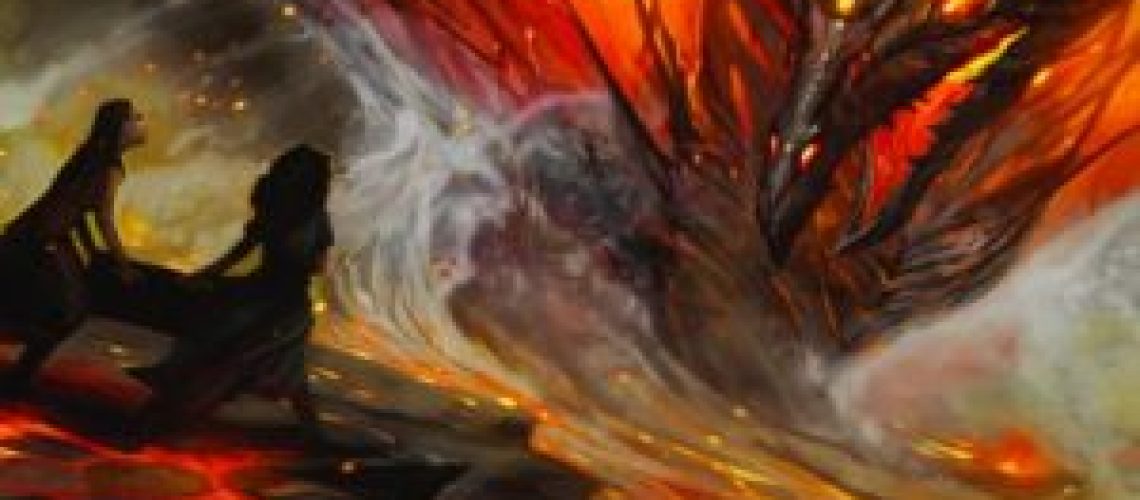Fans of Kate Elliott will have a good idea what to expect from Tachyon Press’ The Very Best of Kate Elliott, a 2015 collection of twelve short stories, some set in the numerous worlds she has invented over the last two decades, as well as four essays. In these richly imagined worlds, intimate scenes take place among friends, lovers, mentors, and families — and the prominent characters are always women. In these stories, a young woman rides to escape an arranged marriage, a widow travels to save her village, and a woman fights to defend her honor.
In her introduction, Kate Elliott discusses the landscape of the fantasy and science fiction worlds she fell in love with, grand stories focused almost exclusively on men. Comparing the river of stories to the river of her home, Elliott writes that “Narrative gets engineered until we start to believe it has always run this way.” Again and again in The Very Best of Kate Elliott, stories full of women show other ways for the narrative to flow. The plot of “Riding the Shore of The River of Death” is almost immediately recognizable as a straightforward fantasy story: a group of young warriors on a hunt to prove their manhood encounter an obstacle and then a powerful sorcerer. Their companions follow and there is a confrontation among a circle of standing stones. At the end, the protagonist must make a choice. Almost a straightforward story, except that one of the hunters, and the sorcerer, are both women. The companions who follow include the hunter’s betrothed, a mighty hero who will nevertheless trap her in a life she does not want. With this story, Elliott adds to and reclaims the simple heroic fantasy so many of us grew up with.

There’s a charge often leveled against books that feature women that they must be “political” or that centering relationships between women either attacks men or somehow interferes with the story. In the essays in this book and elsewhere, Elliott addresses the notion of stories that are more or less “political” (spoilers — “The Status Quo Does Not Need Worldbuilding“), but the stories in this collection show again and again that exploring relationships we do not often see in fantasy and science fiction enhances rather than weakens the narrative. In “The Queen’s Garden,” two sisters, their network of relatives and servants, and the men who come to their father’s court all together weave a story of heroism, treachery and love both romantic and familial — and more successfully than any smaller narrative could have. And “To Be a Man” shows a frank and charming appreciation for men among a household of women.
Three stories in particular stand out from this collection. “Making the World Live Again,” the concluding story, is a slight but delightful story about a girl becoming a young woman who wishes to escape the small village where she grew up. In “The Gates of Jorium,” a princess captured by her usurping uncle both provides strength to resist the usurper and witnesses the ongoing struggle. My personal favorite story is “Leaf and Branch and Grass and Vine,” in which Anna, a widow and former witch’s apprentice, must travel into the city to save her village. As she travels, the wise and respected woman of the village shapes herself to the expectations of others — to friendly women, she is a recent widow seeking employment in the city and eager for advice; to young soldiers, she is a wise herb woman; and to an angry lord, she is a whiny shrew. Again and again, Anna draws on the roles that an older woman can play (including a country bumpkin unused to a big city) in order to reach her destination. As with most of Kate Elliott’s writing, brief interactions illuminate aspects of the protagonist and those around her, building a secondary world while also reflecting back on our own.
If there is a weakness to this collection, it is that there are rarely a clear plots. The purpose of the stories unfolds in a series of chance encounters and thoughtful observations. The stories tend to sink or swim based on how much the reader cares about the protagonist or the setting. For me, it took far too long for “Sunseeker” to reveal the elements of the plot, and the protagonist was simply unable to keep my interest during that time. Many of the stories are set (usually only loosely) in Elliott’s existing series. Knowledge of these books is not required, but familiar readers will recognize characters or elements of the setting, which may make it a bit easier to wait for the plot to develop.
The Very Best of Kate Elliott is a collection of stories and essays that should appeal to readers whether or not they are familiar with Elliott’s existing writing. The thoughtful introduction and essays provide a framework for understanding why stories about women viewed through the female gaze are so essential to broadening and reclaiming the science fiction/fantasy tradition. The twelve stories filled with diverse characters, the wisdom of age, and the exuberance of youth put that framework into practice. The gorgeous cover art by Julie Dillon is the final cherry on top.
——————–
Bio: Jonah Sutton-Morse tries to read in between wrangling two kids. He can be found on Twitter @jsuttonmorse







